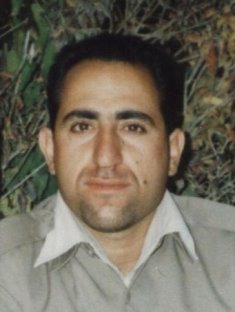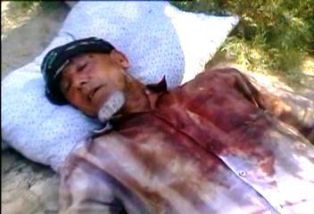
By SELIG S. HARRISON
The biggest threat to the ruling ayatollahs and generals in multi-ethnic Iran does not come from the embattled democratic opposition movement struggling to reform the Islamic Republic. It comes from increasingly aggressive separatist groups in Kurdish, Baluch, Azeri and Arab ethnic minority regions that collectively make up some 44 percent of Persian-dominated Iran’s population.
Working together, the democratic reform movement and the ethnic insurgents could seriously undermine the republic. But the reform movement, like most of the clerical, military and business establishment, is dominated by an entrenched Persian elite and has so far refused to support minority demands.
What the minorities want is greatly increased economic development spending in the non-Persian regions, a bigger share of the profits from oil and other natural resources in their areas, the unfettered use of non-Persian languages in education and politics and freedom from religious persecution. Some minority leaders believe these goals can be achieved through regional autonomy under the existing Constitution, but most of them want to reconstitute Iran as a loose confederation or to declare independence.
Should the United States give money and weapons aid to the ethnic insurgents?
During the Bush administration, a debate raged between White House advocates of “regime change” in Tehran, who favored large-scale covert action to break up the country, and State Department moderates who argued that all-out support of the minorities would complicate negotiations on a nuclear deal with the dominant Persians.
During the Bush administration, a debate raged between White House advocates of “regime change” in Tehran, who favored large-scale covert action to break up the country, and State Department moderates who argued that all-out support of the minorities would complicate negotiations on a nuclear deal with the dominant Persians.
The result was a compromise: limited covert action carried out by proxy, in the case of the Baluch, through Pakistan’s Inter-Services Intelligence Directorate or, I.S.I., and in the case of the Kurds by the C.I.A. in cooperation with Israel’s Mossad. My knowledge of the I.S.I.’s role is based on first-hand Pakistani sources, including Baluch leaders. Evidence of the C.I.A. role in providing weapons aid and training to Pejak, the principal Kurdish rebel group in Iran, has been spelled out by three U.S. journalists, Jon Lee Anderson and Seymour Hersh of the New Yorker and Borzou Daragahi of the Los Angeles Times, who have interviewed a variety of Pejak leaders.
Iran’s Supreme Leader, Ayatollah Ali Khamenei, speaking in the Kurdish city of Bijar, charged on May 12 that the Obama administration had not reversed the Bush policy. “Unfortunately, money, arms and organization are being used by the Americans directly across our western borders in order to fight the Islamic Republic’s system,” he declared. “The Americans are busy making a conspiracy.”
Mossad has long-standing contacts with Kurdish groups in Iran and Iraq established when the United States and Israel wanted to destabilize the Kurdish areas of Saddam Hussein’s Iraq. But now the United States wants a united Iraq in which Kurds, Shiites and Sunnis cooperate. Iran, too, wants a united Iraq because it fears cooperation among its own Kurds and those in Iraq and Turkey to create an independent Kurdistan. So aiding Pejak would hamper future Iran-U.S. cooperation in Baghdad in addition to complicating the nuclear negotiations.
Both the Baluch and the Kurds are Sunni Muslims. They are fighting vicious Shiite religious repression in addition to cultural and economic discrimination.
By contrast, the biggest of the minorities, the Turkic-speaking Azeris, are Shiites, and Ayatollah Khamenei himself is an Azeri. His selection as the supreme leader was in part a gesture to the Azeris designed to cement their allegiance to Iran and to blunt a covert campaign by ethnic kinsmen in adjacent Azerbaijan to annex them. The Azeris in Iran are better off economically than the other minorities but feel that the Persians look down on them. Prolonged rioting erupted for days after a Tehran newspaper published a cartoon in May 2006, depicting an Azeri-speaking cockroach.
The Arabs in the southwestern province of Khuzestan, who are also Shiites, pose the most dangerous potential separatist threat to Tehran because the province produces 80 percent of Iran’s crude oil revenue. So far the divided Arab separatist factions have not created a militia but they periodically raid government security installations, bomb oil production facilities and broadcast propaganda in Arabic on satellite TV channels from shifting locations outside Iran.
The most serious military clashes between the Revolutionary Guards and separatist groups have come on the Kurdish border, where Iran repeatedly bombarded Pejak hideouts in September 2007, and in Baluchistan, where the Guards frequently suffers heavy casualties in clashes with militias of the Jundullah movement operating out of camps just across the border in the Baluch areas of Pakistan and Afghanistan.
Compared to the massive protests in the streets of Tehran and Qum, the uncoordinated harassment of the regime by ethnic insurgents may seem like a sideshow. But if the ethnic insurgents could unite and if the democratic opposition could forge a united front with the minorities, the prospects for reforming or toppling the Islamic Republic, now dismal, would brighten.
For the present, the Obama administration should tread with the utmost care in dealing with this sensitive issue, guided by a recognition that support for separatism and engagement with the present regime are completely incompatible.
Selig S. Harrison is director of the Asia program at the Center for International Policy and author of “In Afghanistan’s Shadow.”



























































No comments:
Post a Comment